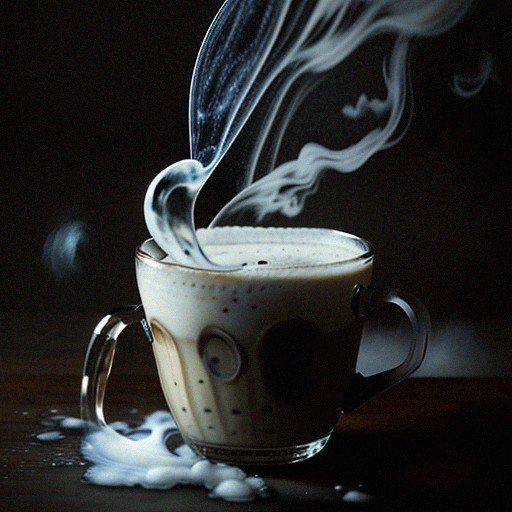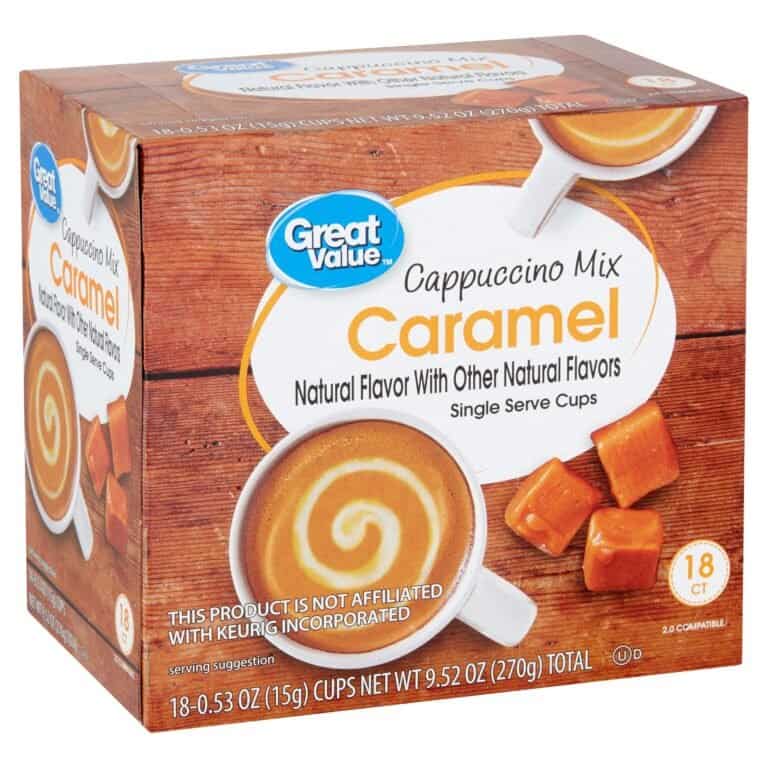How to Perfectly Steam Milk for a Delicious Cappuccino

Steaming milk for cappuccino is an essential skill for any coffee lover. It is what gives cappuccinos their signature creamy texture and adds a layer of sophistication to your coffee experience. While it may seem daunting to steam milk at home, it is actually a simple process that can be mastered with practice.
Understanding the basics of steaming milk is the first step in creating the perfect cappuccino. Choosing the right equipment, preparing the milk, and steaming it to the right temperature are all crucial elements that contribute to a velvety, frothy milk. Once you have mastered these basics, you can move on to creating foam for your cappuccino and perfecting your pouring technique.
In this article, we will guide you through the process of steaming milk for cappuccino, from understanding the basics to creating the perfect foam. By the end of this article, you will have the skills and knowledge you need to create a delicious, café-quality cappuccino in the comfort of your own home.
Key Takeaways
- Understanding the basics of steaming milk is crucial for creating a velvety, frothy milk.
- Choosing the right equipment and preparing the milk are important steps in the process.
- Creating foam for your cappuccino and perfecting your pouring technique will take your skills to the next level.
Understanding the Basics
Steaming milk for cappuccinos is a crucial skill for baristas and coffee enthusiasts alike. It’s what creates the creamy, frothy texture that makes a cappuccino so delicious. In this section, we’ll cover the basics of steaming milk for cappuccinos.
First, it’s important to understand the properties of milk. Milk is a protein-rich food that changes its properties when heated. Steaming milk introduces air into it, which creates the foam that sits on top of a cappuccino. The temperature of the milk also affects its texture, with hotter milk producing less foam.
When steaming milk, it’s important to use the right type of milk. Whole milk is the most common choice for cappuccinos, but non-dairy milks like oat milk can also work well. It’s best to avoid using cold milk, as it can be difficult to achieve the right texture.
To steam milk, you’ll need an espresso machine with a steam wand. Begin by purging the wand to remove any water that may have accumulated. Then, place the wand just below the surface of the milk and turn on the steam. As the milk heats up, move the wand deeper into the milk to create more foam.
It’s important to keep the wand at the right depth to achieve the desired texture. Too shallow, and the milk will be too hot and not frothy enough. Too deep, and the milk will be too frothy and not hot enough.
Once the milk is steamed, it’s time to pour it into your espresso shot. A good cappuccino should have equal parts espresso, steamed milk, and foam.
With these basics in mind, you’ll be well on your way to creating barista-quality cappuccinos at home.
Choosing the Right Equipment
When it comes to steaming milk for cappuccinos, choosing the right equipment is essential. Here are some of the key pieces of equipment you should consider:
Espresso Machine
The first thing you need is an espresso machine that has a steam wand. This is the most popular and best equipment to use for steaming milk for cappuccinos. If you don’t have an espresso machine, you can still steam milk using other methods, but an espresso machine with a steam wand is the easiest and most efficient way to do it.
Milk Steaming Pitcher
You will also need a milk steaming pitcher to hold the milk while you steam it. Look for a pitcher that is made of stainless steel and has a capacity of at least 12 ounces. This will give you enough room to froth the milk without it overflowing.
Thermometer
Using a thermometer is important to ensure that you are steaming the milk to the right temperature. The ideal temperature for steamed milk is between 150 and 155 degrees Fahrenheit. If the milk gets too hot, it can scorch and ruin the taste of your cappuccino.
Steam Wand
The steam wand is the part of the espresso machine that creates the steam to froth the milk. Make sure that the steam wand is clean and free of any residue before you start steaming the milk. You can use a damp cloth to wipe it down.
Milk Frothing
When you start frothing the milk, make sure that the steam wand is submerged in the milk. This will create a vortex that will help to froth the milk evenly. Keep the wand at an angle and move it up and down to create the desired amount of foam.
Milk Jug
The milk jug is used to hold the milk while you are steaming it. Look for a jug that has a pointed spout, as this will make it easier to pour the milk into your cup. The jug should also be made of stainless steel, as this will help to distribute the heat evenly.
Rancilio Silvia
If you are serious about making cappuccinos at home, you might want to consider investing in a Rancilio Silvia espresso machine. This machine is known for its high quality and durability, and it has a powerful steam wand that can froth milk quickly and efficiently.
Whisk
If you don’t have an espresso machine with a steam wand, you can still froth milk using a whisk. Heat the milk on the stove and then whisk it vigorously until it is frothy. This method takes a bit more time and effort, but it can still produce a good result.
In conclusion, choosing the right equipment is essential when it comes to steaming milk for cappuccinos. With the right equipment, you can create a thick and creamy foam that will make your cappuccinos taste like they were made by a professional barista.
Preparing the Milk
When it comes to making a delicious cappuccino, properly steaming the milk is crucial. The process of steaming milk involves heating and aerating it to create a creamy, velvety texture that is perfect for cappuccinos and lattes.
To start, we need to choose the right milk. Whole milk is the most commonly used milk for steaming due to its higher fat content, which creates a creamier texture. However, you can also use skim, 2%, or almond milk if you prefer. Keep in mind that different types of milk will produce different textures and flavors.
Next, we need to ensure that the milk is cold. Cold milk will create more foam and a better texture than warm milk. We recommend starting with a chilled milk pitcher and cold milk straight from the fridge.
When steaming the milk, it is important to keep the steam wand just below the surface of the milk and to avoid incorporating too much air. This will create a smooth, creamy texture without any large air bubbles.
As we steam the milk, we want to aim for a temperature between 150-155°F (65-68°C). This temperature range will create the perfect balance between sweet and creamy flavors. Be sure to use a thermometer to measure the temperature of the milk as you steam it.
Once the milk has been steamed to the desired temperature, we need to create microfoam by carefully frothing the milk. Microfoam is a pourable, liquid foam that adds a rich, velvety texture to our cappuccino. To create microfoam, we need to keep the steam wand just below the surface of the milk and move it in a circular motion to increase the volume of the milk.
Finally, we need to pour the milk into our espresso shot. To create latte art, we can use a spoon to hold back the foam and pour the steamed milk into the espresso shot, creating a layered effect. Practice makes perfect, so keep experimenting with different pouring techniques to create the perfect cappuccino.
Steaming the Milk
To make a perfect cappuccino, you need to steam the milk properly. Steaming the milk is the process of heating and texturing the milk to create microfoam, which is the key to a creamy and velvety cappuccino.
To start, make sure to use cold milk, preferably whole milk, as it produces the best foam. Pour the milk into a milk pitcher, filling it up to about a third of the way to leave room for expansion. Place the steam wand of your espresso machine into the milk, with the tip just below the surface.
Turn on the steam wand and let it run for a few seconds to purge any water or condensed milk from the wand. This ensures that your steam wand is clean and ready to steam the milk.
Next, lower the pitcher so that the steam wand tip is just below the surface of the milk. Position the pitcher at an angle, so that the steam wand is creating a vortex in the milk. This helps to incorporate air into the milk and create a creamy texture.
As you steam the milk, keep the tip of the wand just below the surface of the milk. You should hear a hissing sound as the steam is injected into the milk. Keep steaming until the milk reaches the desired temperature, which is around 140-150°F.
To create the perfect microfoam, you need to create a whirlpool in the milk by swirling the pitcher. This helps to incorporate the air bubbles into the milk and create a smooth texture. Once the milk is steamed and textured, tap the pitcher firmly on a flat surface to remove any large air bubbles.
Remember, steaming the milk takes practice, so don’t be discouraged if your first attempts don’t turn out perfectly. With time and practice, you’ll be able to create the perfect microfoam and enjoy a delicious cappuccino at home.
Creating Foam for Cappuccino
When making a cappuccino, the foam is just as important as the coffee itself. The foam should be creamy, velvety, and have a smooth texture. To achieve this, we need to create microfoam by steaming the milk correctly.
To start, we need to choose the right milk. Whole milk is the best option for creating foam, as it has the right amount of fat and protein. Skim milk, on the other hand, will not give us the same creamy texture.
Once we have our milk, we need to froth it using a milk steaming pitcher and a steam wand. Start by filling the pitcher with cold milk, making sure to not fill it more than halfway. Place the steam wand just below the surface of the milk and turn it on. Keep the wand at an angle and move it in a circular motion to create a vortex in the milk.
As the milk begins to froth, lower the pitcher so that the wand is just below the surface of the milk. This will create microfoam, which is what we want for our cappuccino. The microfoam is a creamy and velvety texture that will give our cappuccino its signature look and taste.
It’s important to pay attention to the temperature of the milk while frothing. The ideal temperature for steamed milk is between 140°F and 155°F. Any hotter than this, and the milk will scorch and lose its flavor.
In summary, creating foam for cappuccino requires choosing the right milk, frothing it correctly, and paying attention to the temperature. With practice, we can achieve the perfect texture and taste for our cappuccinos.
Pouring the Milk and Serving
Once the milk is steamed and frothed to the desired texture, it’s time to pour it into the espresso or coffee. For cappuccinos, we typically pour the frothed milk first, followed by a shot of espresso, and then top it off with a layer of milk foam.
When pouring, it’s important to hold the milk jug at a slight angle and pour slowly, starting from the center of the cup and moving outward in a circular motion. This helps to create a beautiful, even layer of foam on top of the drink.
For lattes, we pour the steamed milk first, followed by a shot of espresso, and then top it off with a thin layer of milk foam. When pouring, we hold the milk jug at a slight angle and pour the milk in a steady stream, aiming for the center of the cup.
Latte art is a popular way to add a creative touch to your latte or cappuccino. To create latte art, we pour the milk in a specific pattern to create a design on top of the drink. This takes practice and skill, but with time and patience, anyone can learn to create beautiful latte art.
When serving the drink, it’s important to handle the cup by the bottom or the handle to avoid burning your hands. We can also add a sprinkle of cocoa powder or cinnamon on top of the foam for added flavor and decoration.
In summary, pouring the milk is the final step in creating a delicious latte or cappuccino. By holding the milk jug at a slight angle and pouring slowly in a circular motion, we can create a beautiful layer of foam on top of the drink. With practice, we can also learn to create stunning latte art designs.






One Comment